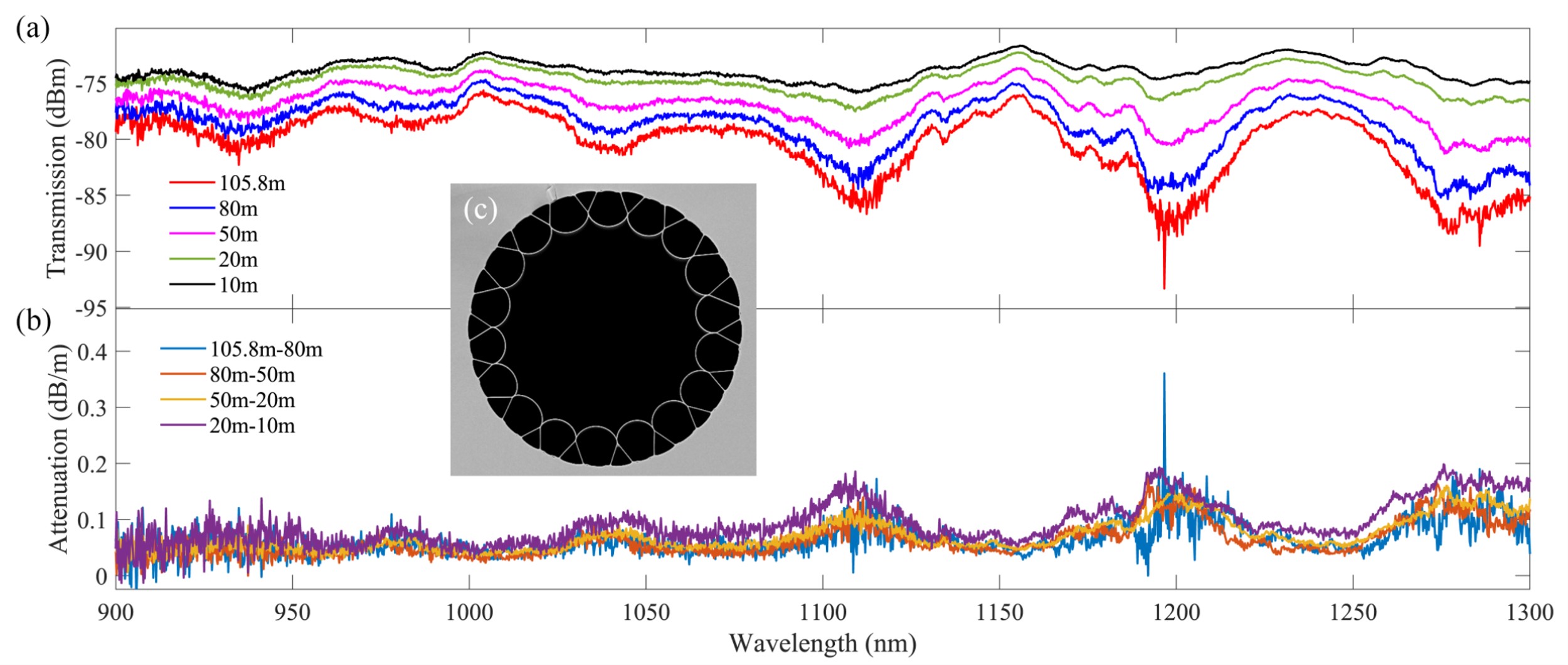
Scientists Generate Gigh Power Nanosecond Pulsed Laser Delivery by MM-AR-HCF
Recently, a research team from Shanghai Institute of Optics and Fine Mechanics of the Chinese Academy of Sciences (CAS) experimentally demonstrated efficienct delivery of multi-mode 1064 nm high-power nanosecond pulse laser by multi-mode anti-resonant hollow core-fiber (MM-AR-HCF). The results were published in Optics Express.
The overlap between the AR-HCF fundamental mode and the cladding material is extremely low (<10-4), and the majority of the optical field energy is transmitted in the hollow core, which can achieve low dispersion, optical nonlinearity, and high laser induced damage threshold. At present, most AR-HCF designs reported present the quasi-single mode guidance, which is difficult to match the flexible and efficient transmission requirements of high-power industrial lasers with poor beam quality.
In previous studies [Optics Express 31, 21870-21880 (2023)], the research team successfully fabricated a low-loss multi-mode anti-resonant hollow-core fiber (MM-AR-HCF) by increasing the number of cladding tubes and thereby increasing the core/cladding ratio of AR-HCF, which effectively suppressing the coupling between higher-order modes and cladding modes.
In this work, based on MM-AR-HCF, multi-mode high-power Nd: YAG nanosecond pulse laser transmission were successfully achieved, with a pulse energy of 21.8 mJ and a peak power of 1.6 MW. The coupling efficiency was above 93%. The characteristics of laser pulses before and after fiber delivery were characterized. After being transmitted through a 9.8m long MM-AR-HCF, the quality of the laser pulse beam was significantly improved, and the time domain and spectrum of laser pulses were basically stable.
The related work has been supported by National Natural Science Foundation of China and the Shanghai Sailing Program.

Fig.1. Transmission (a) and attenuation (b)spectrum and SEM (c) of MM-AR-HCF.

Fig.2. Measured transmission efficiency (a) and time stability (b) of laser delivery.
Article website: https://opg.optica.org/oe/fulltext.cfm?uri=oe-32-10-17229&id=549355#articleBody